Aaron Kuan, The author of this post, he served in the Army and the US National Guard, continued in the private contractual business. Then became a patrol of the Ministry of Defense and a member of the special response, was nominated leading this group and sniper instructor group. Aaron now - instructor in Sage Dynamics. This man knows first hand how our vision in a stressful situation.
KP police after his first shootoutI felt his gun and snatched it from Cabourg. My first shot was from the hip. The bullet hit him in the abdomen, just above the waist. I expected it to fall. Now I understand how it was stupid. He fired before or after I pulled out the gun. I felt myself getting into, I do not think that it was felt. I just reached out and shot. Later I was told that I did 12 shots.
I moved and sought shelter. I thought that my arms are not in order or the bullet stuck in the barrel. I have not heard anything. All that I have seen - it is his weapon. Then he fell. I reloaded automatically. Everything was not as I expected. I do not see the sight. I do not remember what my grip, stand... Perhaps my previous training helped, but I can not say exactly.
During the three years of my teaching, I asked the 110 students who took part in the shootings scripts using Simunition (training ammunition), answer the following questions:
1. With the sudden threat you could get quite a clear picture of the sight?
- No - 90%.
- I do not remember - 9%.
- Yes 1%.
2. You can consciously focus and find your sight?
- I did not have time - 33%.
- No - 31%.
- Yes - 23%.
- I do not remember - 13%.
3. You could inadvertently take aim at any point in the script?
- No - 65%.
- Yes - 20%.
- I do not remember - 15%.
Applied pistols: Beretta 92 and Glock 17 sights OEM Beretta, OEM Glock, Glock Night Sights, Truglo TFO, XS Big dot, Trijicon, Trijicon HD, Sawson Precision (fiber optic front).
Previous experience of shooting at students:
- 0-5 years - 20 people;
- 6-10 years - 45 people;
- 11-20 years - 28 people;
- 21+ years - 17 people.
In all my formal training me no one explained why I do not see a sight with a strong stress in real situations, until I read the "Treatise on physiological optics" Hermann von Helmholtz. From the physiology: the accommodation apparatus of the eye provides image focusing on the retina at a speed of between 350 milliseconds and 1 second, depending upon the age, General eye health and the environment, via the voltage (focusing on distant objects) and relaxation (focusing on close objects) of the ciliary muscles eyes.
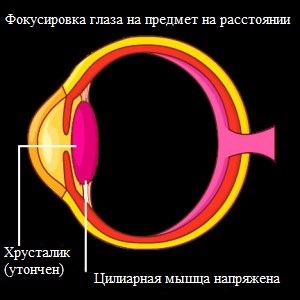
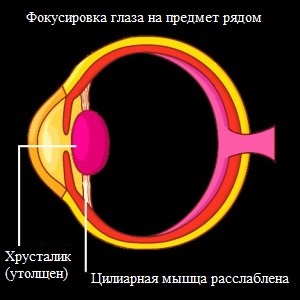
In a stressful situation activates the sympathetic nervous system. There is an instantaneous release of adrenaline in the blood, the ciliary muscle tightens and changes the eye lens for focusing. That is why it is practically impossible to focus with greater stress on subjects located near the eyes.
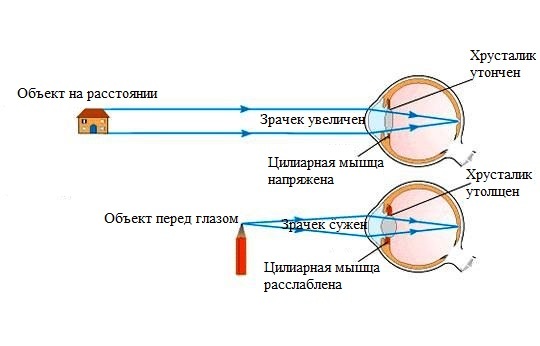
Also, there is an expansion of the pupil, which allows it to pass the maximum amount of light, and thus a better view of the target. But this leads to tunnel vision in which a person loses peripheral vision.
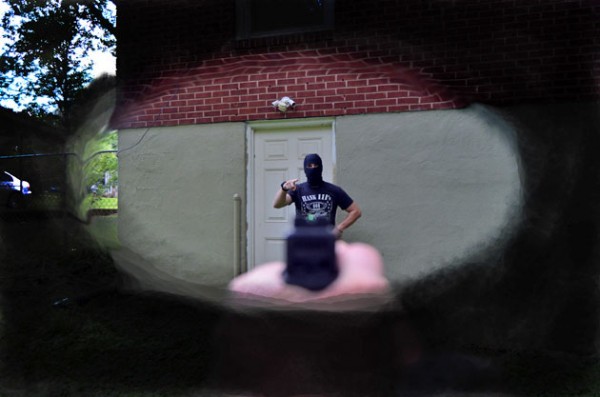
Loss of peripheral vision caused by the level of training and previous experience. But in any case it is possible to expect a loss of 20 to 30% of the 190 ° (155 ° in average per eye) of horizontal viewing.
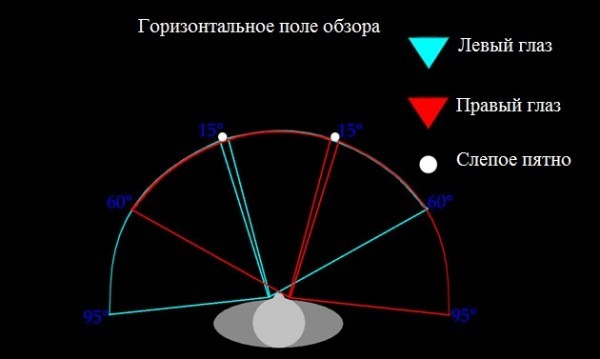
Our vertical field of view covers 60 ° above the line of sight and 70 ° below it. When the tunnel vision loss of vertical viewing can reach 40%.
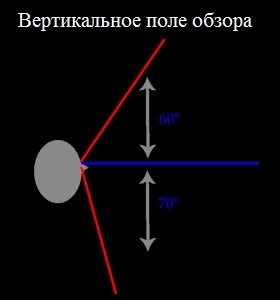
Upon activation, for example due to an external stimulus, the sympathetic nervous system and the compression of the ciliary muscles of the eye occurs loss of depth perception. This is associated with a shift of the visual axis (a line connecting the front and rear poles of the eyeball) and problems of contrast between each eye. This leads to the fact that the threat may appear closer than it actually is. Although this loss is a negative, but it has a positive side - contributes to better treatment and recognition of the threat.
(1, 2)


